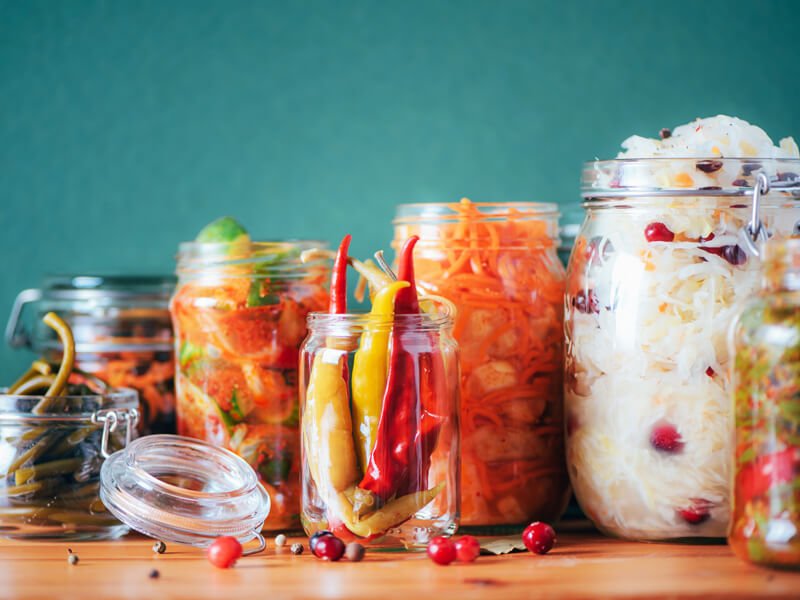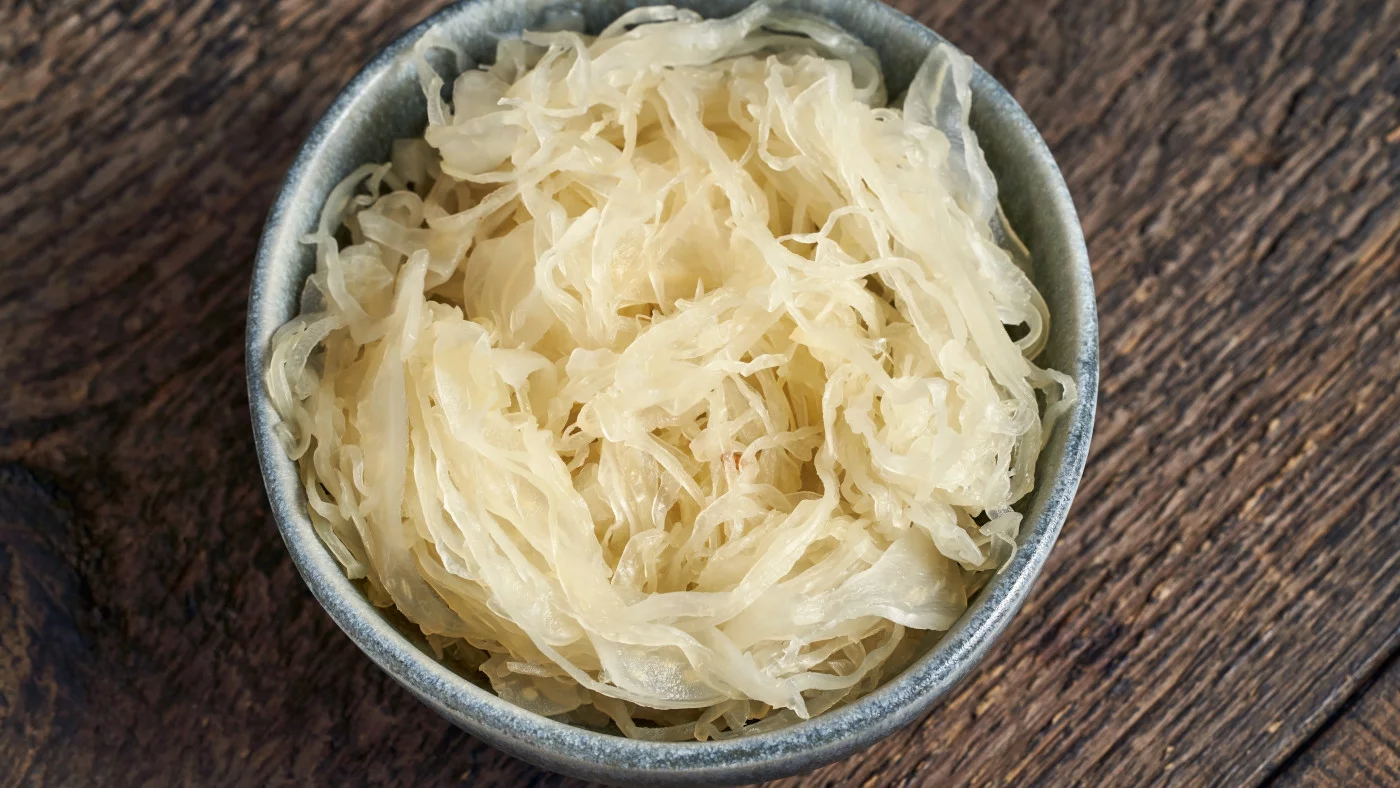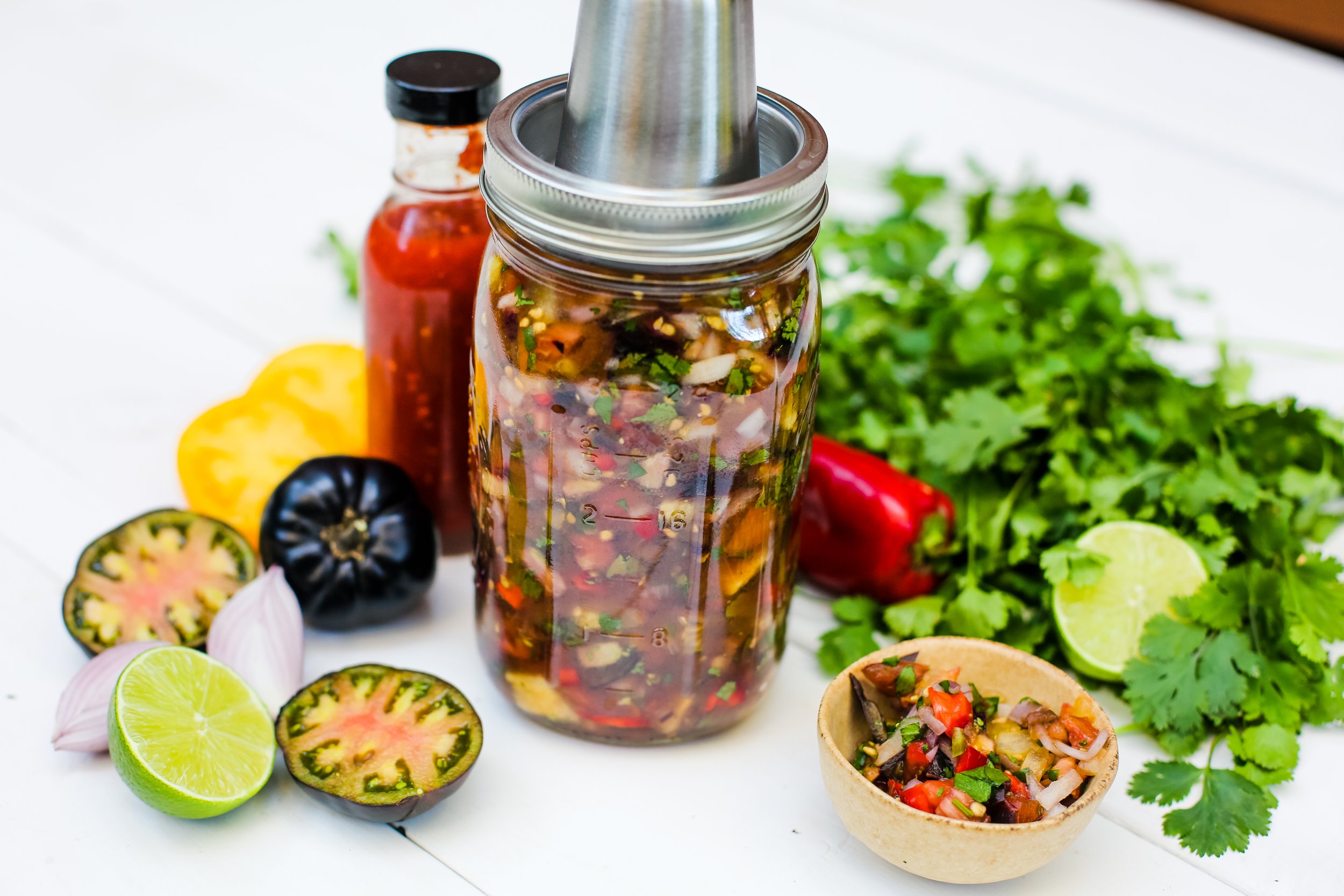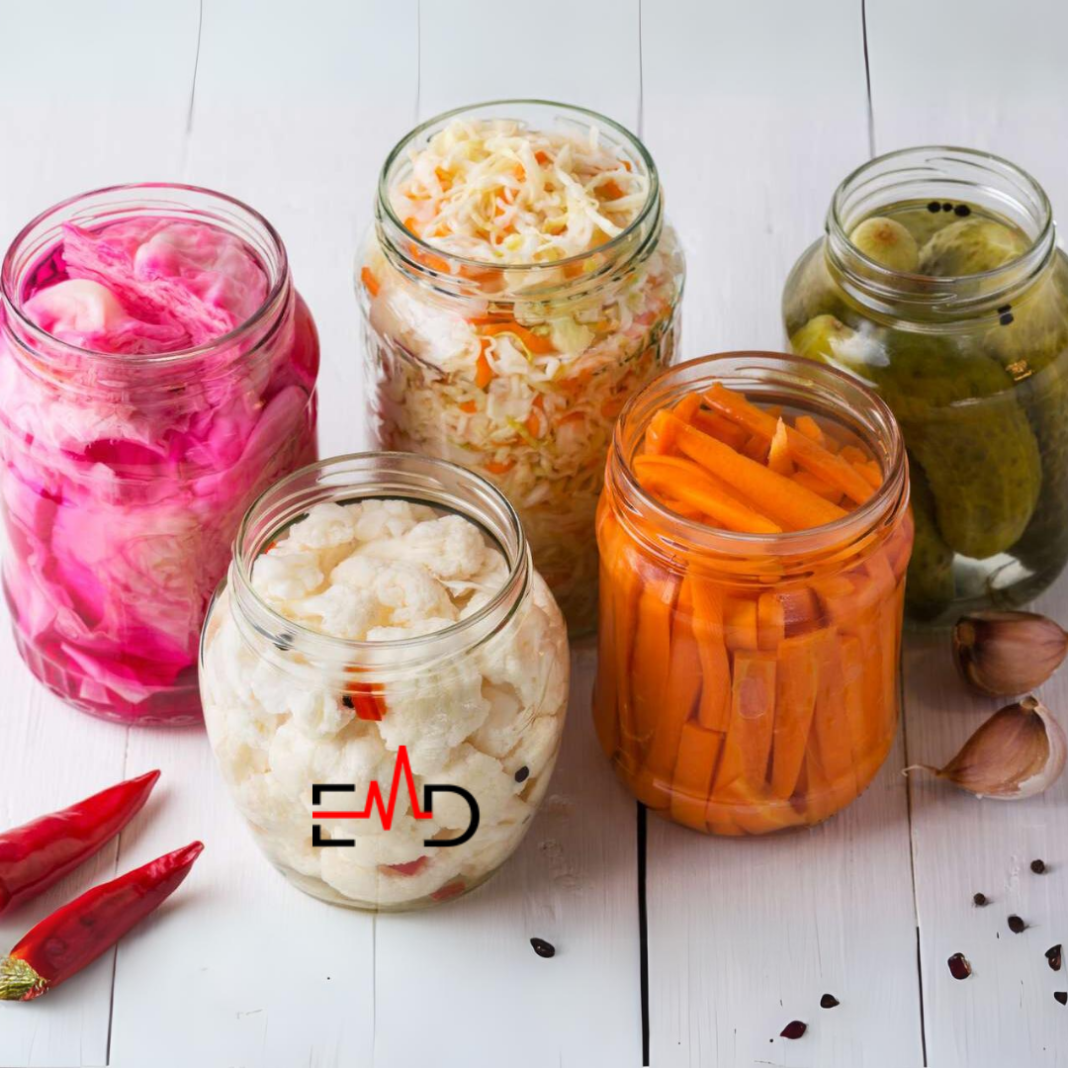Exercise Daily – In recent years, there has been a surge in interest in fermented foods like pickles and kombucha, driven by their potential health benefits. Fermentation, a natural process used for centuries in food preservation, enhances flavor and offers advantages for gut health. Adding fermented foods to your diet can aid digestion, improve the gut microbiome, and alleviate issues like bloat.
Not all fermented foods are created equal, but many, including yogurt and fermented cabbage, are rich in nutrients and beneficial bacteria that support overall well-being. Fermented foods like yogurt and kombucha are just a few examples of the wide range available, each offering unique strains of probiotics to boost gut health. Whether fermented dairy or plant-based options, incorporating these foods into your diet can improve digestive health and support a healthy microbiome.

The Magic of Fermentation
It’s important to note that while fermented foods can provide many health benefits, they’re just one component of a healthy diet. As fermentation is a natural process, following recipes and guidelines to ensure safety is essential. If you have specific health concerns, it’s advisable to seek medical advice. So, why not explore the world of fermentation and discover delicious ways to improve your gut health today?
Understanding Fermentation
Fermentation is a metabolic process that converts carbohydrates into alcohol or organic acids using microorganisms like yeast or bacteria. This transformative process extends the shelf life of foods, enhances their nutritional profile, and introduces unique flavors and textures.
Common Fermented Foods and Their Benefits
Yogurt: The Classic Fermented Delight
Yogurt is one of the most popular and widely consumed fermented foods. Made from fermented milk, yogurt is rich in probiotics, calcium, and protein. The live cultures in yogurt aid digestion, boost the immune system, and promote better gut health. Including yogurt in your daily diet can be a delicious way to introduce fermented foods into your routine.
Sauerkraut: Tangy and Nutritious
Sauerkraut, a traditional German dish, is made by fermenting finely sliced cabbage with lactic acid bacteria. This tangy and crunchy delight is delicious and packed with nutrients. Sauerkraut is an excellent source of fiber, vitamins C and K, and various antioxidants. The fermentation process enhances the bioavailability of nutrients, making them more easily absorbed by the body.
Kimchi: The Spicy Korean Staple
Kimchi is a staple in Korean cuisine and has gained popularity worldwide due to its unique flavors and health benefits. Made from fermented vegetables, such as cabbage and radishes, kimchi is known for its spicy and tangy taste. This fermented delight is rich in vitamins A, B, and C and beneficial bacteria. Kimchi supports digestion, helps maintain a healthy weight, and contributes to heart health.
Kefir: The Probiotic Powerhouse
Kefir is a fermented milk drink that originated in the Caucasus region. It is made by fermenting milk with kefir grains, a combination of bacteria and yeast. Kefir is a powerhouse of probiotics, containing a diverse range of beneficial bacteria and yeasts. Regular consumption of kefir can improve digestion, boost the immune system, and promote overall gut health.
Sourdough Bread: A Fermented Delight
Sourdough bread is a favorite among bread lovers, known for its unique tangy flavor and chewy texture. Unlike regular bread, sourdough is made through a fermentation process that involves wild yeast and lactic acid bacteria. This natural fermentation gives sourdough bread its distinct taste and makes it easier to digest. The fermentation process breaks down gluten and phytic acid, making sourdough bread a more gut-friendly option for individuals with gluten intolerance or sensitive digestion.
The Health Benefits of Fermented Foods
Aiding Digestion and Gut Health
One of the primary benefits of fermented foods is their ability to improve digestion and promote gut health. Fermentation breaks down complex carbohydrates and proteins, making them easier to digest. Additionally, beneficial bacteria in fermented foods helps restore the balance of gut flora, which is crucial for maintaining a healthy digestive system.
Boosting Immunity
Research suggests that consuming fermented foods may positively impact the immune system. The probiotics in these foods stimulate the production of antibodies and enhance the activity of immune cells, thus strengthening our body’s natural defense mechanisms. By including fermented foods in our diet, we can reduce the risk of certain infections and diseases.
Enhancing Nutrient Absorption
Fermented foods increase the availability of nutrients and enhance their absorption in our bodies. The beneficial bacteria in these foods produce enzymes that help break down complex nutrients, making them more accessible for absorption. This improved bioavailability allows us to derive greater nutritional value from our food.
Supporting Overall Health and Well-being
In addition to the benefits mentioned above, incorporating fermented foods into your diet can positively impact your overall health. Consuming these foods has been associated with a reduced risk of heart disease, improved cholesterol levels, and better weight management. Furthermore, fermented foods’ antioxidants and anti-inflammatory compounds contribute to their potential health-boosting properties.

Making Your Own Fermented Foods: Recipes to Try
Now that you have a good foundation on fermentation, let’s explore some easy and beginner-friendly recipes to get you started:
1. Sauerkraut
Ingredients:
- 1 medium head of cabbage
- 1 tablespoon sea salt
- Optional: caraway seeds, juniper berries, or other spices
Instructions:
- Remove outer leaves from the cabbage and set them aside.
- Finely shred the cabbage using a knife or a mandoline.
- In a large bowl, sprinkle the cabbage with salt and let it sit for 10 minutes.
- Massage the cabbage with your hands until it starts releasing its juices.
- Pack the cabbage tightly into a clean glass jar, pressing it down with a spoon or your hands.
- Pour any liquid the cabbage releases into the jar to cover it completely.
- Place one reserved cabbage leaf on top to submerge the shredded cabbage.
- Secure an airtight lid on the jar and let it ferment at room temperature for 1 to 4 weeks, depending on your desired taste.
- Check the sauerkraut periodically, pressing down the cabbage if needed to keep it submerged.
- Once fermented to your liking, transfer the jar to the refrigerator to slow down the fermentation process.

2. Kimchi
Ingredients:
- 1 medium head of Napa cabbage
- 1/4 cup sea salt
- 1 tablespoon grated ginger
- 3 cloves garlic, minced
- 2 tablespoons Korean chili powder (gochugaru)
- 2 green onions, chopped
- 1 tablespoon fish sauce (optional for non-vegetarian version)
Instructions:
- Cut the cabbage lengthwise into quarters and remove the core.
- Dissolve the sea salt in a large water bowl and soak the cabbage quarters in the brine for 2 hours.
- Rinse the cabbage under cold water and drain well.
- In a separate bowl, mix the grated ginger, minced garlic, Korean chili powder, green onions, and fish sauce (if using) to form a paste.
- Spread the paste on each cabbage leaf and coat them evenly.
- Roll up each cabbage quarter tightly and place them in a clean glass jar.
- Press the cabbage firmly to release any air bubbles and ensure it is submerged in its juices.
- Seal the jar with an airtight lid and let it ferment at room temperature for 2 to 5 days.
- Check the kimchi daily and press it down to keep it submerged.
- Once it reaches your desired level of fermentation, transfer the jar to the refrigerator to slow down the process.
3. Kombucha
Ingredients:
- 1 SCOBY (Symbiotic Culture of Bacteria and Yeast)
- 4 cups water
- 4 black tea bags
- 1 cup granulated sugar
- Optional: fruit juice, ginger, or other flavorings
Instructions:
- Boil the water and remove it from heat.
- Add the tea bags and let them steep for 5 minutes.
- Remove the tea bags and stir in the sugar until it dissolves.
- Allow the tea to cool to room temperature.
- Pour the cooled tea into a clean glass jar.
- Gently place the SCOBY on top of the tea.
- Cover the jar with a breathable cloth (like a coffee filter) and secure it with a rubber band.
- Let the jar sit at room temperature, away from direct sunlight, for 7 to 14 days, depending on your desired taste.
- After the initial fermentation, you can add fruit juice or other flavorings if desired.
- Once the kombucha reaches your preferred level of carbonation, transfer it to airtight bottles and refrigerate them.

4. Yogurt
Ingredients:
- 4 cups milk (dairy or non-dairy)
- 2 tablespoons plain yogurt with live active cultures
Instructions:
- Pour the milk into a saucepan and heat it over medium heat until it reaches 180°F (82°C), stirring occasionally.
- Remove the saucepan from heat and let the milk cool to 110°F (43°C).
- In a small bowl, mix 1/2 cup of the warm milk with the plain yogurt to temper it.
- Stir the tempered yogurt mixture back into the saucepan with the remaining milk.
- Pour the mixture into clean glass jars or containers.
- Cover the jars with lids or plastic wrap and place them in a warm spot, like an oven with the light on or a yogurt maker.
- Let the yogurt ferment for 4 to 12 hours, depending on your desired tartness and consistency.
- Once fermented, refrigerate the jars to halt the fermentation process.
5. Pickles
Ingredients:
- 1 pound cucumbers (pickling or Kirby cucumbers work best)
- 2 cups water
- 1 cup white vinegar
- 2 tablespoons pickling salt
- Optional: garlic cloves, dill sprigs, mustard seeds, or other spices
Instructions:
- Wash the cucumbers thoroughly and trim off the ends.
- Slice the cucumbers into spears or rounds, depending on your preference.
- Combine the water, vinegar, and pickling salt in a medium saucepan.
- Bring the mixture to a boil, stirring until the salt dissolves completely.
- Remove the saucepan from heat and let the brine cool to room temperature.
- Place the cucumbers and any desired spices into clean glass jars.
- Pour the cooled brine over the cucumbers, ensuring they are fully submerged.
- Seal the jars with airtight lids and let them sit at room temperature for 2 to 4 days.
- Check the pickles daily and taste them for your preferred level of sourness.
- Once they reach the desired taste, transfer the jars to the refrigerator to slow down the fermentation.
6. Fermented Salsa
Ingredients:
- 4 large tomatoes, diced
- 1 onion, finely chopped
- 2 jalapeno peppers, seeded and minced
- 2 cloves garlic, minced
- Juice of 2 limes
- 1/4 cup chopped fresh cilantro
- 1 tablespoon sea salt
Instructions:
- In a large bowl, combine all the ingredients and mix well.
- Transfer the salsa mixture into clean glass jars, leaving about 1 inch of headspace.
- Press the salsa down with a spoon to remove any air bubbles and ensure it is fully submerged in its own juices.
- Seal the jars with airtight lids and let them ferment at room temperature for 2 to 4 days.
- Check the salsa daily, pressing it down if needed to keep it submerged.
- Once the fermentation reaches the desired level, transfer the jars to the refrigerator to slow down the process.
- Enjoy the tangy and flavorful fermented salsa with your favorite dishes!

7. Miso
Ingredients:
- 2 cups soybeans
- 2 cups koji (fermented rice or barley)
- 1/4 cup sea salt
Instructions:
- Wash the soybeans thoroughly and soak them in water overnight.
- Drain the soaked soybeans and cook them in boiling water until tender.
- Drain the cooked soybeans and let them cool to room temperature.
- In a large bowl, combine the cooked soybeans, koji, and sea salt.
- Mash the mixture using a potato masher or a food processor until it forms a paste.
- Transfer the miso paste into a clean glass jar or crock, pressing it down firmly to remove any air pockets.
- Cover the jar or crock with a clean cloth and secure it with a rubber band.
- Let the miso ferment at room temperature for 6 to 12 months, stirring it occasionally.
- Once fermented, transfer the miso to airtight containers and store it in the refrigerator.
- Use the rich and umami-packed miso paste in soups, marinades, and dressings.
8. Tempeh
Ingredients:
- 2 cups soybeans
- 2 tablespoons vinegar or tempeh starter culture
Instructions:
- Wash the soybeans thoroughly and soak them in water for 8 to 12 hours.
- Drain the soaked soybeans and cook them in boiling water for 30 minutes.
- Drain the cooked soybeans and let them cool to room temperature.
- Inoculate the soybeans with a tempeh starter culture or mix in vinegar.
- Place the soybeans in a clean glass container or plastic bag, spreading them out evenly.
- Incubate the soybeans in a warm and humid environment (around 86°F or 30°C) for 24 to 48 hours.
- Check the tempeh periodically for white mycelium growth, which indicates successful fermentation.
- Once fully fermented, store the tempeh in the refrigerator and use it in stir-fries, sandwiches, or as a meat substitute.
9. Kefir
Ingredients:
- 1 tablespoon kefir grains
- 2 cups milk (dairy or non-dairy)
Instructions:
- Place the kefir grains in a clean glass jar.
- Pour the milk over the kefir grains, ensuring they are fully submerged.
- Cover thejar with a clean cloth or coffee filter and secure it with a rubber band.
- Let the jar sit at room temperature for 24 to 48 hours, allowing the kefir to ferment.
- Gently stir the kefir with a non-metal spoon to mix the grains.
- Strain the kefir through a fine-mesh sieve, separating the grains from the liquid.
- Transfer the kefir grains to a new jar and repeat the process to make a new batch.
- Store the strained kefir in the refrigerator and enjoy it chilled.
- The kefir grains can be reused to make kefir multiple times, following the same steps.
FAQs – The Benefits of Fermented Foods and Recipes for Making Your Own)
Q: Are fermented foods safe to eat?
A: Yes, fermented foods are generally safe to eat. However, following proper fermentation techniques and hygiene practices is essential to avoid contamination. If you have any specific health concerns or conditions, it’s best to consult with a healthcare professional before including fermented foods in your diet.
Q: Can I consume fermented foods if I’m lactose intolerant?
A: Yes, fermented foods, such as yogurt and kefir, are lower in lactose due to fermentation. This makes them more easily digestible for individuals with lactose intolerance. However, listening to your body and consuming fermented foods in moderation is always advisable to gauge your tolerance.
Q: Can I use store-bought fermented foods instead of making my own?
A: While store-bought fermented foods can be convenient, they may undergo processes that reduce their probiotic content. To maximize the health benefits, opting for naturally fermented foods or making your own at home is recommended.
Q: How can I incorporate fermented foods into my daily diet?
A: Enjoy fermented foods as standalone snacks or incorporate them into various dishes. For example, you can add sauerkraut or kimchi to sandwiches or wraps, blend kefir into smoothies, or use yogurt as a base for dressings or dips. Be creative and experiment with combinations to find what suits your taste buds.
Q: Are there any risks associated with consuming fermented foods?
A: Consuming fermented foods is safe and beneficial for most people. However, if you have a compromised immune system or certain medical conditions, it’s advisable to consult with a healthcare professional before making significant changes to your diet.
Conclusion
Fermenting foods adds flavor to your meals and provides numerous health benefits. From supporting gut health and digestion to boosting immunity and enhancing nutrient absorption, fermented foods offer a natural and delicious way to improve overall well-being. You can embark on a journey of taste, health, and culinary creativity by exploring different recipes and incorporating fermented foods into your daily diet. So, open the jar, savor the tang, and reap the rewards of fermentation!




